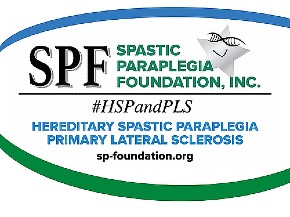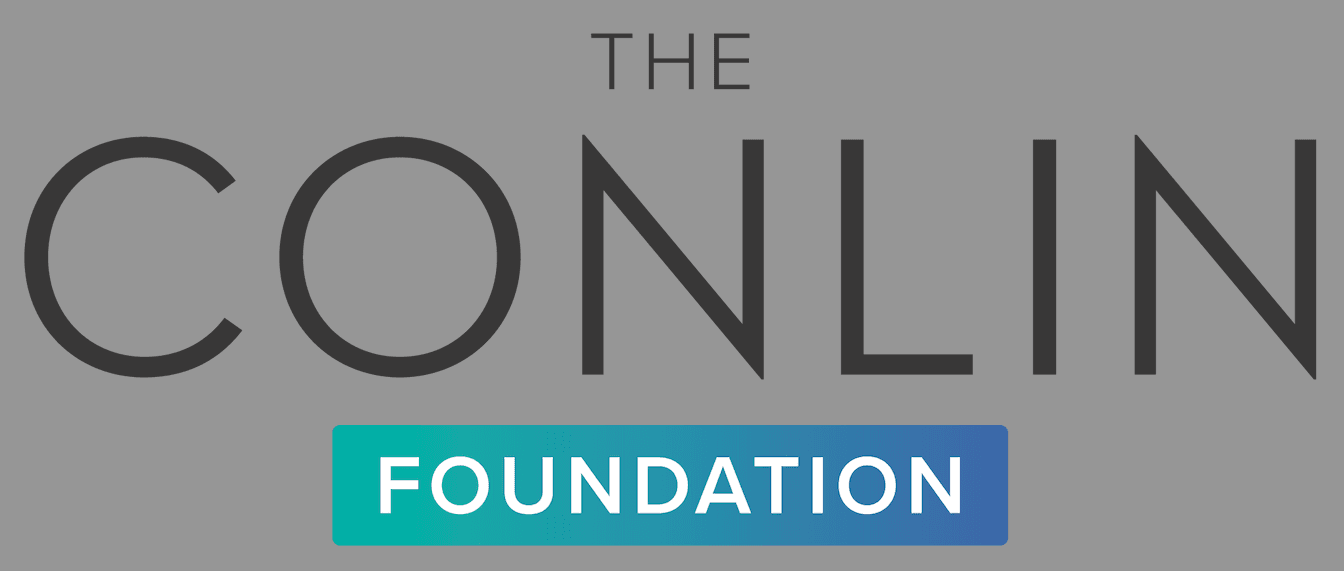Scientists have come up with a drug, injected once a day, that appears to make children’s bones grow. To many, it’s a wondrous invention that could improve the lives of thousands of people with dwarfism. To others, it’s a profit-driven solution in search of a problem, one that could unravel decades of hard-won respect for an entire community.
In the middle are families, doctors, and a pharmaceutical company, all dealing with a philosophically fraught question: Is it ethical to make a little person taller?
The most common cause of dwarfism is known as achondroplasia. People with the condition, caused by a rare genetic mutation, have shorter limbs and shorter stature than those without it, and they deal with a lifetime of skeletal issues that often require a battery of corrective surgeries.
For years a U.S. company called BioMarin Pharmaceutical (BMRN) has been developing a drug that targets the genetic roots of achondroplasia, a mutation that stops cartilage from turning into bone. The goal, according to the company, is to prevent the medical complications associated with achondroplasia, which include sleep apnea, hearing loss, and spinal problems.
But proving the drug’s long-term skeletal benefits would require a decades-long study, which is an expensive and, to BioMarin, impractical proposition. Instead, the company is measuring the the most immediate byproduct of bone growth: height.
And that’s where the philosophical schism begins.
For thousands of little people, the short stature that comes with achondroplasia is not a disability in need of treatment but a difference to be celebrated. Organizations like Little People of America have spent years dispelling stereotypes, advocating for fairness, and pointing out that having achondroplasia doesn’t preclude anyone from a fulfilling life. Dwarf pride means flourishing because of one’s body, not in spite of it.
Through that lens, the drug looks to some like a threat of erasure, a so-called cure for people who are not sick. Furthermore, about 80% of babies with achondroplasia are born to parents of average height. That means, if the drug goes on to win Food and Drug Administration approval, the decision of whether to give it to a child would often be made by people with no exposure to little people culture, who know nothing of dwarf pride.
“People feel like this is an effort to eliminate the dwarfism community,” said Becky Curran Kekula, a disability advocate and motivational speaker who was born with achondroplasia. “Some say this is going to help things get better, but how could someone know?”
There is no consensus. Where some little people see the drug, called vosoritide, as an affront to their identity, others wish it had existed when they were children. Parents, too, speak of it either as a source of hope or a danger to their child’s sense of self-worth. Online discussions of the issue often grow heated. Some people contacted by STAT declined to speak on the record for fear of inciting a backlash.
There is, however, little dispute over what the future holds. Vosoritide is on track to win FDA approval, leaving all parties to prepare for a world in which height is a matter of choice.
BioMarin’s work in dwarfism starts with the genetics.
In 1994, scientists at the University of California in Irvine traced achondroplasia to a gene called FGFR3, which regulates bone growth. In people with the condition, they discovered, that gene is mutated, impairing the natural process of turning cartilage into bone.
About seven years later, researchers at Kyoto University in Japan demonstrated that a protein in the body, long studied for its role in heart function, seemed to reverse the effects of that broken gene. The natural version of that protein, called C-type natriuretic peptide, gets cleared out of the body in about a minute, making it useless as a medicine. But, over about a decade of scientific trial and error, BioMarin came up with an analog called CNP39, a longer-lasting version that it believed could counteract the genetic mutation and restore healthy bone growth. The result was vosoritide.
So far, the drug looks like it works. In a clinical trial enrolling 35 children with achondroplasia, the highest doses of vosoritide helped kids reach growth milestones 50% faster than they did without treatment. Compared to baseline, those children grew roughly two extra centimeters each year, bringing them nearly in line with their average-heighted peers. The side effects were mostly mild, including irritation at the injection site, low blood pressure, and fever. The results were published in the New England Journal of Medicine last summer.
BioMarin started a larger, placebo-controlled study in 2016, enrolling more than 100 children between 5 and 14 in a trial expected to conclude later this year. If it’s positive, the company will submit the results to the FDA in hopes of winning approval. As before, the primary goal is increasing growth.
“But aspirationally, what we’re all hoping to see is not only do we increase height but we improve the quality of life and the clinical morbidities that these patients suffer from,” said Dr. Jonathan Day, BioMarin’s executive medical director.
Achondroplasia affects the growth of all but a few bones in the body, not just the ones associated with height. That means vosoritide’s benefits, while most observable in terms of height, would in theory translate to the spine, where achondroplasia’s most dangerous side effects take root.
That will take years to prove, Day acknowledged. He has heard the concerns about the emphasis on height, about the existential implications for adult little people. But vosoritide, he argued, presents the best chance of a better future for children with achondroplasia.
“We can’t make a drug that enhances skeletal growth but doesn’t make you taller,” Day said. “It just doesn’t work that way.”
“People feel like this is an effort to eliminate the dwarfism community. Some say this is going to help things get better, but how could someone know?”
BECKY CURRAN KEKULA, DISABILITY ADVOCATE AND MOTIVATIONAL SPEAKER WHO WAS BORN WITH ACHONDROPLASIA
Little People of America, with a membership of around 8,000, spent years keeping BioMarin at a distance. Founded in 1957, the group’s stated mission is to provide a safe, welcoming community for all little people, no matter their opinions on controversial issues like dwarf tossing and limb-lengthening surgery. When the group learned about vosoritide in 2012, it seemed like yet another matter of personal choice, something on which members could disagree but from which the group would officially abstain.
But LPA’s commitment to neutrality came dramatically into question earlier this year, when the group’s board invited representatives from BioMarin to the organization’s annual conference and, most alarming to some members, accepted a $130,000 donation from the company.
Many members only learned of the arrangement when they saw the drug company’s logo on a list of LPA sponsors on conference collateral. That led to an outpouring of concern and condemnation on LPA’s Facebook (FB) page. At the conference, held in San Francisco in July, the group convened an emergency town hall meeting, where the board sat in a hotel ballroom and listened to outrage and confusion from its members. Footage of that meeting was also posted to the Facebook page.
“Seeing that sponsorship on the conference booklet was like a slap in my face,” LPA member Monique Conley told the board. “We didn’t need their money,” she said to applause. “We’re not these poor charity cases. We have lives. We love our lives.”
Regardless of LPA’s intentions, its acceptance of money from BioMarin sent the message to some members that the group had co-signed the development of vosoritide, a notion many find abhorrent, said Olga Marohnic, chairwoman of the organization’s Hispanic affairs committee.
“There’s millions of other companies that we can get money from that will not tie us to a pharmaceutical company that in my view is trying to tell my family, tell my son, and my friends that they’re not OK the way they are,” Marohnic said at the town hall. Her teenage son, Matthew, has achondroplasia.
Mark Povinelli, LPA’s president, answered each member’s concern during the hourlong forum. He expressed regret for how the board communicated its decision, but not for the decision itself. In all likelihood, there will soon be a world in which vosoritide will be available to kids with achondroplasia, he said. Pretending otherwise would leave LPA on the outside looking in. Inviting BioMarin to the conference, however distasteful it may seem, gives LPA members a chance to be heard, he said.
“I feel personally that the future of this organization is going to have people of different heights. It’s just the reality. They’re already in the trials. We can’t stop them,” Povinelli said. “I want to make sure that those kids know that there is a support group out there that they can go to. And if we shun them so vociferously now, we’re never going to get them.”
For decades, all have been welcome to LPA, he added, and there’s no reason vosoritide should change that.
“If this divides us, we can’t blame pharma,” Povinelli said. “It’s on us. It’s totally on us. So it’s up to us to have these dialogues and to talk about this. I feel so passionately about this organization,” he said, stifling tears, “and it was never our intention to divide it.”
LPA did not make Povinelli available for an interview.
LPA’s voice is perhaps the loudest in the little people community, but it doesn’t speak for everyone. Last year, the FDA convened a public hearing on the topic of vosoritide, inviting experts, parents, and people with achondroplasia to share their thoughts on BioMarin’s drug. Some expressed the familiar reservations. Many more said they welcome it.
One of them was Chandler Crews. In 2010, Crews decided she had had enough of having to ask for help, of worrying about whether public restrooms would be accessible, and of struggling with routine feminine hygiene.
She was 16 and standing 3 feet and 10 inches tall, and she decided to lengthen her legs. That meant a procedure in which surgeons cut her femur, tibia, and fibula. They attached external fixators to hold them together, set in place with 12 struts drilled into the bone. Multiple times per day, for 12 weeks, she twisted the struts to stretch out her legs. She spent another three months allowing bone to grow into the gaps. After weeks of physical therapy, she was back on her feet, 6 inches taller.
Then, two years later, she did it again, going through the same routine. She also had her arms lengthened, a procedure that involves cutting into the humerus, installing struts, and twisting every day.
There was pain, but nothing a tapered dose oxycodone couldn’t manage. Crews is now 26 and just shy of 5 feet tall. She considers limb lengthening to be the best decision she has ever made.
She no longer has to worry about getting shampoo out of her hair, dealing with particularly heavy doors, or needing pedal extensions to drive. Then there are the benefits she didn’t anticipate. Speaking face-to-face with people, rather than gazing up at them, makes a world of difference, she said. And, with hindsight as evidence, she feels for the first time like people are treating her in accordance with her actual age.
“Beforehand I would hate asking people for help or assistance with things, but now if I can’t reach something, I’m like, I’ll ask whoever,” Crews said. “I think it’s that now I feel more like I’m just short and less that I have a disability. I think that has a lot to do with it.”
Unlike vosoritide, Crews’ procedure offers no promise that she won’t need further surgery in the future, that she won’t encounter any of the medical complications that often come with achondroplasia. It’s just a matter of height. But to Crews, the psychosocial benefits of being taller are well worth the discomfort of limb-lengthening. She doesn’t have dwarf pride.
“I’ll never have that,” she said. “I’ve always seen my having dwarfism as a medical diagnosis, which is what it is. So when people would tell me, ‘You’re just short’ — well, if that’s the case, then why am I constantly having to go to the doctor to get my ears checked? To examine my spine?”
The implications of height go beyond aesthetics, according to Dr. John Phillips, who has been diagnosing and treating achondroplasia since the 1970s. Phillips, a pediatric geneticist at Vanderbilt University, got word a few years ago that a longtime patient and friend had died. Achondroplasia had left her with spinal stenosis, nerve damage caused by undergrown vertebrae that was beyond the reach of surgery. But what killed her was a fall in a bathroom, one that resulted from her struggling to use a toilet that was too tall for her stature.
Now Phillips is an investigator in the vosoritide trial, a role for which he receives no direct payment from BioMarin. Perhaps the drug could have prevented his friend’s spinal stenosis. But even if it hadn’t, even if it had only made her taller, she might still be alive, Phillips said.
“Some people are concerned that this is a cosmetic drug,” Phillips said. “I’m trying to say: In my experience, seeing patients die, I don’t view that as cosmetic. I view that as extremely serious.”
Meher Haider, Belal Haider, Munira Shamim, Amer Haider, and Ahmin Haider (left to right) at their home in Saratoga, Calif. The family has a nonprofit, Growing Stronger, with the mission of improving the quality of medical care for people with achondroplasia through supporting research.
Amer Haider was on a 12-hour flight to China when he got the idea. Looking for a movie to help pass the time, he settled on “Extraordinary Measures.” When the lead actor, Brendan Fraser, has his life upended with news of his daughter’s rare disease, Haider thought of his toddler, Ahmin, diagnosed with achondroplasia the year before. And when Fraser’s character makes the acquaintance of Harrison Ford’s prickly scientist with an idea for a treatment, Haider saw a path forward.
In 2010, Haider and his wife, Munira Shamim, embarked on a scientific journey of their own. It led them to Dr. William Horton, at Shriners Hospital in Oregon, who explained there was no shortage of bright ideas in achondroplasia, just a lack of funding. So Haider and Shamim started Growing Stronger, a nonprofit that would support achondroplasia research.
To the couple, the idea seemed simple enough. Ahmin’s diagnosis portended a lifetime of medical difficulties, and science might be able to make things better. But the complexity of achondroplasia, medicine, and dwarf pride became clear in the early days of fundraising, after Haider made his pitch to a member of LPA: “I said, ‘What do you think?’ And he said, ‘Well, I think what you’re doing is genocide.’”
“It was a really hard-hitting comment,” Haider said. But he’s glad he heard it. Over time, Growing Stronger amended its language to encompass as much of the achondroplasia community as possible. The group’s mission statement used to emphasize efforts to improve the quality of life of people with achondroplasia — fraught with the implication that little people lead poor lives. Now it’s about improving medical care. Regardless of one’s stance on dwarf pride, everyone agrees time outside the hospital is better spent than time within it.
“As we dug deeper, we realized that in the achondroplasia community, there is a huge component of self-identity, which makes 100% sense,” Haider said. “And if you go in saying ‘I’m here to try to take away your identity,’ the reaction is what you’d expect.”
Growing Stronger has since raised more than $500,000, including from donors at LPA. It has funded research at labs around the world, and it hosts Q&As with medical experts, a free resource for the achondroplasia community.
Ahmin Haider is now 11. He’s doing well in school, has joined the Boy Scouts, and went away to camp over the summer. He talks about growing up and starting a home for children with achondroplasia who’ve been given up for adoption, “a place where they can find love,” Shamim said.
Ahmin has been fortunate to have few medical complications so far, his parents said, but keeping him healthy, functioning, and confident takes daily work.
“The amount of bullying that he has had to deal with on the playground, I can’t even begin to fathom,” Shamim said. “The number of times he’s asked why he’s so short is scathing to the psychology. He has had to really toughen up and be proud of who he his. But we had to do the extra work of enabling him to arrive at that self-confidence: ‘You’re good as you are. You’re good enough.”
In January 2018, when Ahmin was 9, he enrolled in BioMarin’s vosoritide study, the one that would support FDA approval. There’s no way to know whether he got the drug or placebo in the first year of the study, but for at least the past six months, he’s been taking vosoritide every day. The family hasn’t been obsessively tracking his height, but his mobility seems to have improved. At camp, he swam an entire mile.
There was no debate over whether Ahmin should take part in the study, Haider and Shamim said, no question of whether vosoritide’s effects on height might unwind their son’s hard-won confidence as a little person.
“For me, these are not irreconcilable ideas,” Shamim said.















